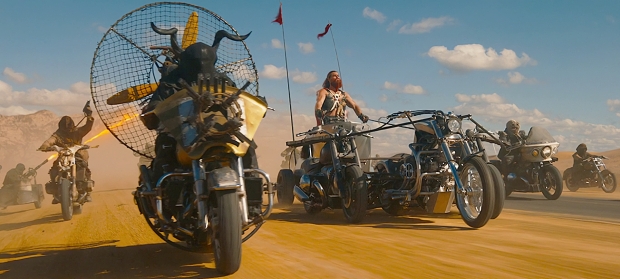
Furiosa: A Mad Max Saga Cinema Review
From humble beginnings with the micro-budgeted Mad Max way back in 1979, Australian paramedical turned director George Miller quickly came to the attention of Hollywood, where his keen visual eye and lofty ambitions gave him carte blanche for his next project. Turning down multiple offers (including Stallone’s First Blood), Miller returned to the dystopian world in The Road Warrior, where Warner Brothers stumped up a much higher budget to unleash his creative forces to great effect.
 Mad Max
Mad Max
His follow-up Beyond Thunderdome generally scored decent reviews. It proved culturally relevant, but diminishing returns laid the franchise to rest for thirty years until the long-delayed Fury Road blew audiences’ minds and re-defined the action genre once again. So how exactly does the now 79-year-old Miller top that? Well, he wisely chooses not to.
Following several civilization-ending conflicts, Australia (and presumably, the world) has become a collapsed society in an irradiated desert. In one of the last vestiges of greenery, young Furiosa (Alyla Browne/ Anaya Taylor-Joy) is kidnapped by a scouting party of the ambitious (but slightly inept) warlord Dementus (Chris Hemsworth) who jealous regards the last remaining pillars of production but may have what it takes to leave an impact on the final vestiges of semi-functioning society.
Despite its somewhat confusing name, Furiosa serves as a direct prequel to Fury Road (a Mad Max 3.5, if you will), taking viewers right up to the events portrayed in that film, but keeping the focus squarely on the titular hero, rather than the enigmatic Max.
![]() Anya Taylor-Joy as Furiosa
Anya Taylor-Joy as Furiosa
Given the difference in narrative time (not least the 12 years since cameras rolled), the role initially played by Charlize Theron has been recast with Anya Taylor-Joy and newcomer Alyla Browne, who prove to be fine choices indeed, even if Taylor-Joy lacks a little of the grit and intensity that Theron brought.
Sadly, Chris Hemsworth is not as convincing as the lead villain, Dementus, who shifts uneasily between intensity and buffoonery. Of course, that is his character to a degree, but the addition of a ridiculously Bane-like voice and prosthetic nose makes the whole package hard to take seriously. He’s a fine and reliable actor, but I remained keenly aware that I was watching Chris Hemsworth throughout, which made it a little harder to immerse myself fully in the proceedings.
While Furiosa remains far more consistent with the visual look established in Fury Road than with any of its predecessors, it is narratively and tonally quite a different beast altogether - a good choice since it would be virtually impossible to top that film, nor would audiences welcome a warmed-up re-make of that film. Nonetheless, Furiosa does seem much less structured (perhaps reinforced by the elongated timeframe) and doesn’t offer the same propulsive drive nor the same laser-focused editing style. It feels churlish, even unfair, to directly compare Furiosa to the stunningly inspired Fury Road - yet it is practically impossible not to, and unfortunately, it does suffer as a result.
![]() Chris Hemsworth as Dementus
Chris Hemsworth as Dementus
Isolated, Furiosa is a highly enjoyable action film with engaging characters, stunning visuals, and solid action beats. But just like The Hobbit is to The Lord of the Rings, the same elements don’t always coalesce quite the same way again. Worse, it would seem that for the sake of production efficiency, there hasn’t been quite the same emphasis on practical effects, leading to a few examples of sub-standard CG effects that occasionally take you out of the film.
Disappointingly, audiences worldwide haven’t taken to Furiosa with the fervor expected by the studio to support such a mammoth production, so it’s possible that the franchise may need to take a breath - almost certainly necessitating a new director and a new vision for the future. Again, it’ll be an incredibly hard act to follow, but we all know Hollywood can’t resist the trappings of a tried-and-true franchise for long.















